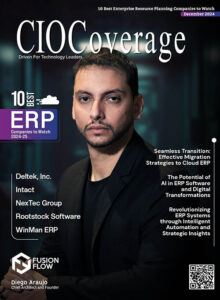 According to the latest report from the World Bank, 1.7 billion population stands unbanked. Without access to formal financial services, these individuals cannot avail of social protection, save money and benefit from global asset inflation phenomenon that makes rich even more reacher leaving the poor behind. As a result, they risk losing out on basic amenities such as healthcare, nutrition, energy, and water. In case of economic shocks or disasters, the poor might fall back into extreme poverty reversing last decades of progress. A country with a sizeable share of the unbanked population will find it challenging to progress socially and economically. As such, financial inclusion is a prerequisite for both individual and country prosperity and sustainable economic growth.
According to the latest report from the World Bank, 1.7 billion population stands unbanked. Without access to formal financial services, these individuals cannot avail of social protection, save money and benefit from global asset inflation phenomenon that makes rich even more reacher leaving the poor behind. As a result, they risk losing out on basic amenities such as healthcare, nutrition, energy, and water. In case of economic shocks or disasters, the poor might fall back into extreme poverty reversing last decades of progress. A country with a sizeable share of the unbanked population will find it challenging to progress socially and economically. As such, financial inclusion is a prerequisite for both individual and country prosperity and sustainable economic growth.
Financial Literacy and Risk-awareness – The Missing Ingredients
Unsurprisingly, many of the unbanked households are low-income families living in remote, rural areas. As FinTech moves towards a new era, inclusive FinTech – FinTech for financial inclusion – is bridging the banking gap in underserved regions and proving a game-changer for traditional banking. Following the success of Kenya’s M-Pesa in the late 2000s, many inclusive FinTech companies have emerged over the past decade. The digital ecosystem in emerging markets such as Latin America, Africa, and Asia is vibrant and thriving. However, the FinTech industry as a whole faces critical barriers that hinder its growth – financial literacy and risk awareness. It is not an isolated issue that impacts the poor. Surprisingly it is equally relevant across millennial and Gen Z segments from developed countries.
The OECD defines financial literacy as ‘a combination of awareness, knowledge, skill, attitude, and behavior necessary to make sound financial decisions and ultimately achieve individual financial wellbeing. On the other hand, digital literacy is the ability to understand and use technology. Illiteracy caused due to the lack of financial or digital education at school is further exacerbated by income and gender disparities. Eventually, financially and digitally illiterate users find traditional financial services and fintech offering confusing and complicated. Without a proper understanding of basic concepts, their risks and the FinTech product’s benefits, they are unlikely to embrace new financial products.
However, once these individuals overcome learning gaps, they can take accountability for their finances, stay aware of their risks, and use money as a tool for economic development. As it those are significant barriers for product adoption and growth, inclusive FinTech companies are vested in experimenting with a variety of strategies to provide financial education, raise risk awareness, and achieve financial inclusion on a large-scale.
How FinTech is Bridging the Literacy gap
67% of the world population, i.e., 5.1 billion people, owned a mobile phone in 2019. 57%, or 4.4 billion people, had access to the internet. FinTech companies are leveraging these low-hanging fruits and meeting customers halfway with simplified products. Mobile money service M-Pesa relied on Safaricom’s vast agent network to personally educate consumers, build trust, and ensure continuous usage.
Nigeria’s Access Bank further took a gendered approach with ‘Better Mama Better Pikin’, a mobile wallet offering micro-savings and insurance services to expectant mothers. Considering possible lower education levels, it ran targeted campaigns with the help of agents to promote a savings culture. As a part of its one-month pilot program, it conducted educational ante-natal sessions. The program reached 8500 women and decreased infant and maternal mortality reductions by 2% for the involved institutions. Close-knit rural communities prefer the comfort of informal savings groups. Senegal’s MaTontine set up online saving groups where rural low-income women could stay informed on loan payments and insurance options through mobile phones.
In emerging markets, affordable smartphone ownership is increasing every year. 3.2 billion, or 40% of the world’s population, owned smartphones in 2019. Assuming moderate levels of digital literacy, these users gain access to new channels of financial education through dedicated apps and web applications. Besides investing in agent-to-user interaction that was a key driver for adoption and success in the last ten years, many FinTech firms new are developing interactive online educational platforms. Kenyan FinTech Eneza used mobile network operator APIs to provide more than 2 million African learners with mobile learning courses on topics including financial literacy. Going further, India’s neobank Niyo Bharat launched a comprehensive financial literacy program for the Indian blue-collar workforce. Financial literacy programs can systematically equip low-income families with the knowledge and tools required to manage money and make informed financial decisions.
In low-income rural households, parents seldom have conversations on financial planning with their children. In many cases, parents themselves lack understanding of digital or financial concepts. FinTech companies are addressing this root cause via gamification and non-consequential money management. In Peru, where financial illiteracy reaches 80%, ALFI – a game app for financial literacy – is making young people adept at financial concepts and money management. Mexico’s Mozper offers digital banking services for Latin American parents to work with their children on real-life money management.
Users that gain a minimum level of digitally literacy and financial literacy can make use of dedicated apps and low-cost banking solutions and participate in the financial ecosystem. Mexico’s albo helps users categorize expenses, generate income reports, and thus develop responsible spending and saving habits. Niyo Bharat’s mobile app features – be it the VoiceOver, salary advance, wealth product offerings, free fund transfer, and free accidental death insurance – are designed to help users monitor and manage various aspects of money management. IBrazil’s Nu Bank and India’s Finin neobank guides users on wealth management with financial education content, data-driven insights, and AI-based recommendations.
How InsurTech is Raising Risk Awareness
As a consequence of lacking financial literacy, low-income consumers can be unaware of their risks and how they are evolving across their life stages and naturally don’t understand how Insurance can help them. However, some InsurTech’s have been able to make rural communities receptive to insurance concepts. In Kenya MicroEnsure, for example, used customer testimonials and educational events to promote adoption through word-of-mouth. Adoption of easy-to-use platforms and embedding Insurance allowed users to pay basic insurance premium payments via airtime purchases or bank deposits, thus customizing the product for local population needs.
Inclusive InsurTech companies are seeing success in educating and demonstrating to consumers the immediate results of availing Insurance. South Africa’s Lumkani uses this concept when dealing with families living in informal settlements. The company’s core product offering is a bundle of Insurance against loss of life, shelter, and assets in case of a fire. To achieve this, Lumkani has designed an Internet of Things (IoT) heat sensor that acts as an early warning system that helps to prevent and minimize the impact of the incidents. To adapt to the customer, Lumkani utilizes a network of agents who approach low-income consumers face-to-face using this as an opportunity to educate them about the product and home safety.
Above all, collaboration has proved essential for achieving insurance value chain integration. In Sri Lanka, a decentralized insurance platform Etherisc worked with non-profit Oxfam and insurer Aon to provide 200 paddy farmers with agricultural Insurance. Oxfam, with its on-ground expertise, educated farmers on agrarian risks. Etherisc built an agricultural insurance blockchain and set up smart contracts that would automate claims based on weather events. Automation of claims cut down costs for Aon, allowing to offer Insurance at affordable prices. Eventually, farmers found the process more convenient as they did not have to file for claims.
Another great example of solving the systemic issues of the underinsured population is Pin An’s Poverty Alleviation Insurance Scheme. China’s largest insurance company turned InsurTech, leverages core insurance product innovation, technology and it’s a vast ecosystem of partners to drive industrial development in disadvantaged areas and financial inclusion of impoverished households through credit guarantee insurance. At the core of the program is education and training of the vulnerable population to raise awareness about the risk and development opportunities that the program enables.
The FinTech and InsurTech industry is rife with innovations covering technology but also the core business models that address the needs of the bottom of the pyramid. In the years to come, these advancements will prove instrumental support in progressing financial education and risk awareness gaps that are critical steps towards financial inclusion and poverty reduction across most vulnerable segments.















